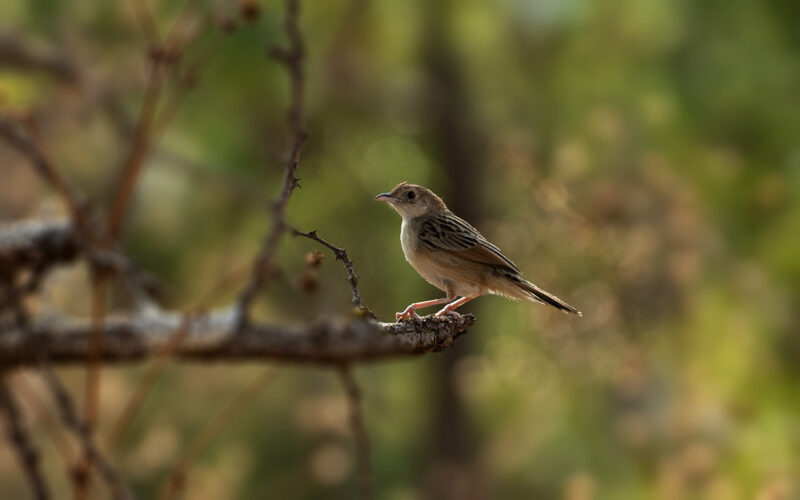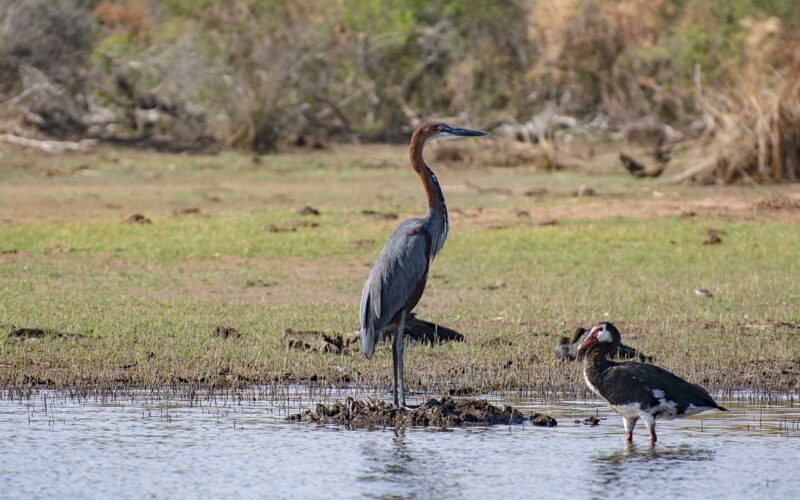The 1,122 sq km Akagera National Park, Rwanda’s only savanna park is a top birding hotspot featuring on all classic Rwanda birding safari for its diversity of birdlife, boasting over 500 bird species checklist across its varied habitats. The diversity of birds in Akagera NP is due to the park’s geographic location at the confluence and transitional zones of Africa’s most important bird biomes/habitats. At Akagera NP, the expansive East African savanna grasslands and Zambezian miombo woodlands give way to the largest wetland system in Central East Africa. This extensive and complex wetland system consists a dozen lakes fed by river Kagera as it meanders through to drain north-east into Lake Victoria is an Important Bird Area (IBA) by Birdlife, protecting biome-restricted bird species.

Akagera National Park Bird Highlights
Akagera National Park boasts a plethora of habitats including savanna woodlands, grassland plains and wetland fringed lakes that support host a diversity of local specialists unique to these habitats including range-limited specialists. Below we explore this diversity of habitats and unique species.
Birding the Broad-leafed Woodlands and Grassland Plains
Birding through the broad-leafed wooded hillsides at Akagera NP offers chances to encounter several Zambezian biome restricted specialists at their northern range-limit here. These include; Tabora Cisticola, Southern Black Flycatcher, Miombo Wren Warbler, Souza’s Shrike, Ruaha Chat and the Red-faced Barbet, an East African endemic.
The park’s extensive woodlands host Slate-coloured Boubou, Green-winged Pytilia, Emerald-spotted Wood Dove, Greater Honeyguide, Narina Trogon, African Grey Hornbill, Stout Cisticola, and the elegant Lilac-breasted Roller, Green-capped Eremomela, Cabani’s and Cinnamon-breasted Buntings. The acacia woodlands host the Pearl-spotted Owlet, Green Woodhoopoe, Little Spotted, Golden-tailed and Bennett’s Woodpeckers, Spot-flanked Barbet, Bare-faced Go-away Bird, Crested Francolin, and more. Raptors are well represented in Bateleur, Black-chested and Brown Snake Eagles, Martial, Walberg, Bateleur and Tawny Eagles. Vultures include Griffon’s, White-backed, White-headed and Lappet-faced Vultures.
Birding along the short open grassland plains in Kilala sector you pick up Collared Pratincole, Rufous-naped and Flappet Lark, Long-billed and Grassland Pipits along with Kittlitz’s Plover, Senegal and Wattled Lapwing. Yellow-throated Longclaw, Hildebrandt’s Spurfowl, Coqui and Crested Francolins.

Birding on Lake Ihema- Akagera NP
While birding at Akagera National Park take a rewarding birding boat cruise on Lake Ihema, the largest of the chain of lakes fed by the Kagera river for an excellent birding expereince with a quality check-list of waders and water associated specialists including the elusive African Finfoot. The birding cruise follows the wooded-fringed lake edges where several of Lake Victoria biome specialists occur including White-winged Swamp Warbler, Marsh Tchagra, Fan-tailed Widowbird, Blue-headed Coucal, Caruthers Cisticola, Northern Brown-throated Weaver and more.
The bird-breeding island on Lake Ihema hosts a diversity of waders including African Darter, Long-tailed and Great Cormorant, Black-crowned and White-backed Night Herons. Other specialists include Spur-winged Goose, Saddle-billed Stork, Egyptian Goose, Malachite and Pied Kingfishers, Swamp Flycatcher, Yellow-billed Stock, African Spoonbill, Long-toed Lapwing, Lesser Moorhen and more. African Marsh Harrier, African Fish Eagle, seasonal Western Marsh Harrier and Osprey patrol the skies above these wetlands.
Getting To and Amenities at Akagera National Park
Akagera National Park lies only 120 km east of the capital Kigali, a drive that should take about 2.5 hours, accessed through the park’s southern gate of Kayonza. The park’s northern gate of Nyungwe is exit-only. Excellent top quality accommodation plans are located within the park itself and on the edges of the park suitable for all budgets.
Best time to Bird in Akagera National Park
Akagera National Park is an-year-round birding destination. The park lie in a low-lying area, a contrast to Rwanda’s average landscape standard of towering highlands and receives average rains less that in the highlands. Akagera NP has dairy an average temperature of 25 0 C/77 0 F during the day falling to 16 0 C/61 0 F at night. The park experiences two annual wet seasons from October to early December and a short one between March to early May where tracks require a 4WD vehicle especially near wetlands. The dry spell from June to September means vegetation is dry but more wildlife near the water sources.
